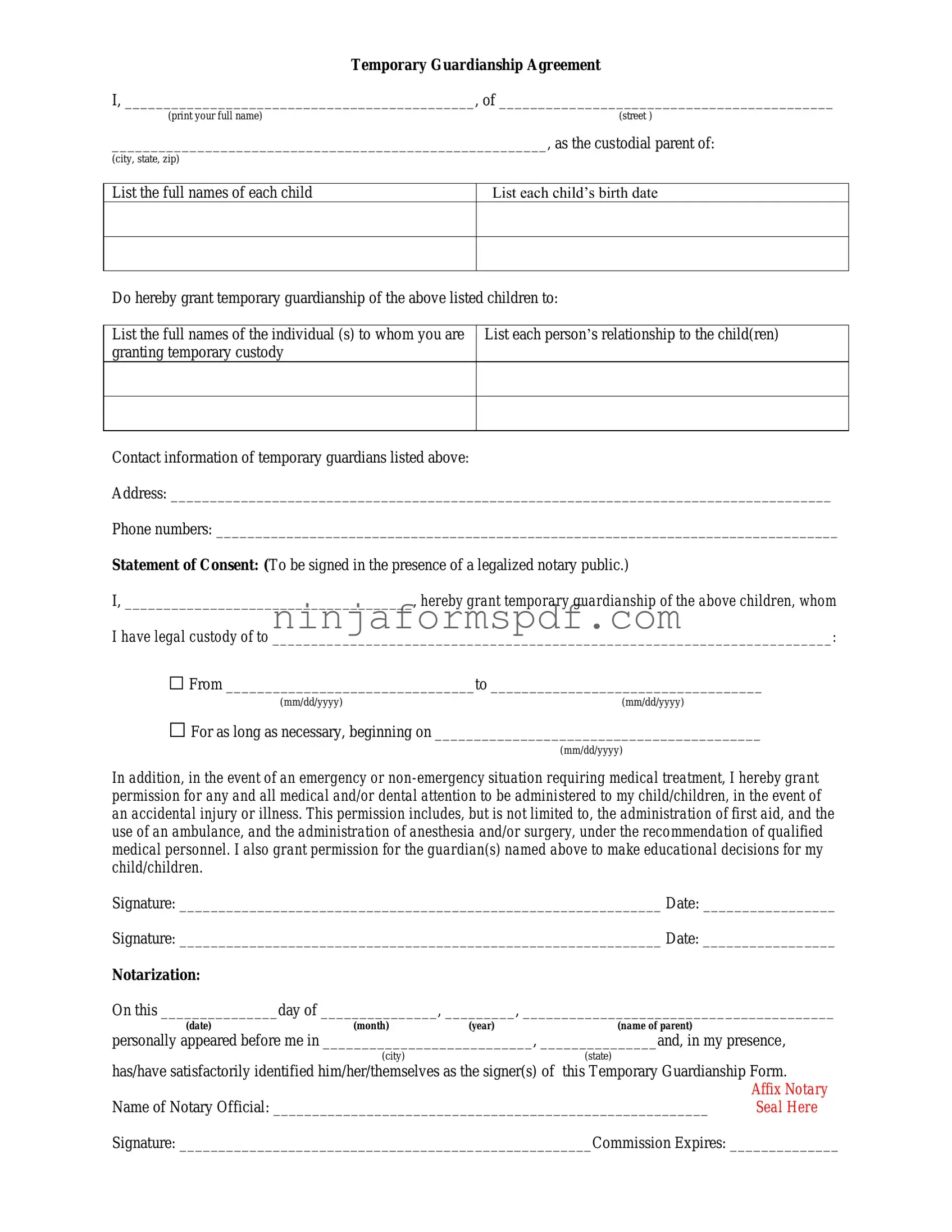What is a Temporary Custody form?
A Temporary Custody form is a legal document used to grant someone temporary custody of a child. This form is often used when the primary caregiver is unable to care for the child due to illness, travel, or other temporary circumstances. It ensures that the child is cared for by a trusted adult during this period.
Who can file for Temporary Custody?
Typically, a parent or legal guardian can file for temporary custody. In some cases, a close relative or friend who has been significantly involved in the child's life may also file, provided they obtain consent from the legal guardian or demonstrate a pressing need for intervention.
What information is required to complete a Temporary Custody form?
Completing a Temporary Custody form requires detailed information including the names and addresses of the current legal guardians, the name and birthdate of the child, the name and address of the person being granted temporary custody, and the specific dates or circumstances under which this arrangement will take place. Additionally, details regarding the child’s daily routine, medical care needs, and any financial arrangements for the child's care may also be required.
How long does temporary custody last?
The duration of temporary custody can vary greatly depending on the specific circumstances and any applicable state laws. Typically, the form will specify the start and end dates of the temporary arrangement. If an indefinite period is necessary, it may be outlined as such, with the understanding that either party can request a review or termination of the agreement under certain conditions.
Is a Temporary Custody form legally binding?
Yes, once it is filled out correctly and signed by all relevant parties, including obtaining any necessary court approval, a Temporary Custody form becomes a legally binding document. This means that all parties must adhere to the terms set forth in the agreement.
Can temporary custody be revoked or modified?
Yes, temporary custody arrangements can usually be revoked or modified if all parties agree to the changes or if a judge determines that a change is in the best interest of the child. To modify or revoke the agreement, the person seeking the change would typically need to file a petition with the court that originally approved the temporary custody.
Where can I get a Temporary Custody form?
Temporary Custody forms can be obtained from a variety of sources including online legal resources, family law attorneys, or local court offices. It's important to ensure that the form is specific to your state or jurisdiction, as laws and requirements can vary significantly.

